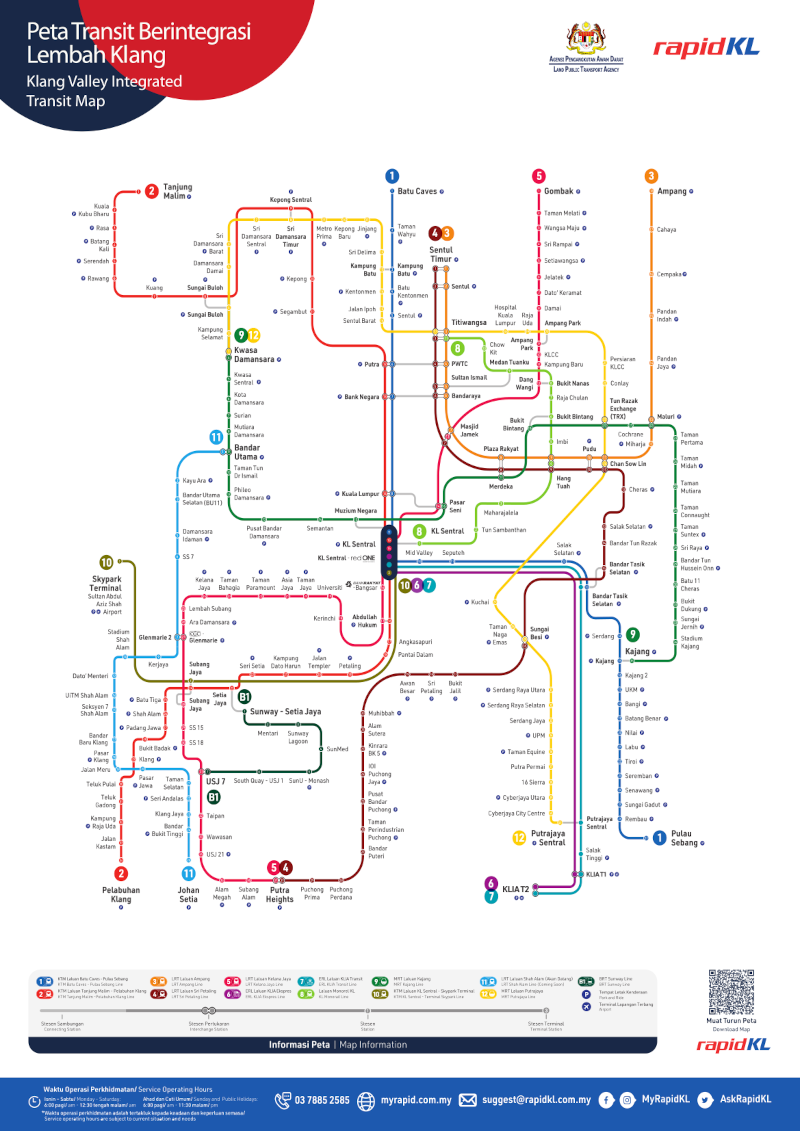View and download the integrated MRT, LRT & Monorail map. Below you’ll find an image optimized for mobile and desktop, the local PDF, Rapid KL’s official PDF, and the key interchanges every visitor should know (TRX, Pasar Seni, Masjid Jamek and KL Sentral). Need fares, passes or airport tips? Jump to the full guide.
Table of contents
Want more than the map? Fares, passes (MyCity/MyTourist), schedules, KLIA connection and suggested routes are in the full guide: Kuala Lumpur MRT/LRT/Monorail Guide.










